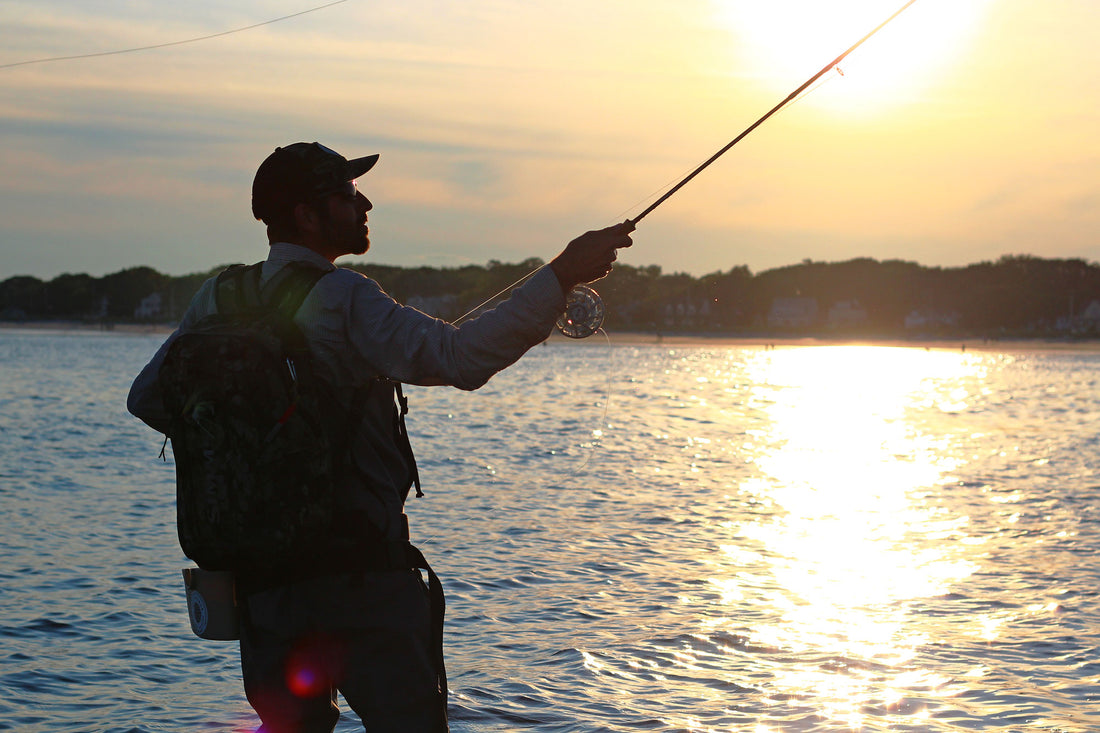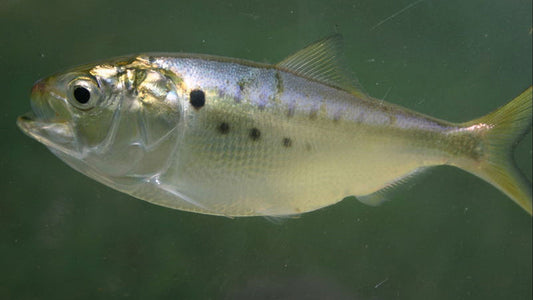
What Makes a Fly Rod Great for Striped Bass?
Share
Written By: Joe Webster // Photo: Josh Thelin
Purposefully, this article does not mention any specific brands or models. This piece was not written to be a “Top 5 Best Rods” article or to sell you on any brand or model, but more so an article to help you determine what may be the best 5 rods for you specifically. For help picking out what brand and model of rod is right for you, shoot us an email or give us a call at the shop. We are here to help make sense of striped bass fishing and the gear you may need to accomplish your goals.
This is a question we get here at the shop on a very regular basis and one that the fly fishing industry as a whole has really not given any clear answer to. To answer this it is important to understand the industry mentality and how new and innovative technology is applied to fly rods. Striped bass fishing is not overlooked in the industry, however it is on the back burner for most manufacturers. Freshwater trout gear, whether that be rods, reels, or lines is always the first to be acknowledged. In the fly rod specific world, this means the newest technology and most effort into design and manufacturing will be put into the 9ft 5 weight rod before anything else. Almost every fly angler, whether just starting out or a seasoned veteran, will own this rod. In most situations it's actually the first rod we own. When the saltwater world is considered, the first thing most manufacturers focus on is tropical applications. Designing and manufacturing rods geared toward bonefish, tarpon, and permit has always come first. Oftentimes these efforts can overlap into the striped bass world, but really for the angler targeting striped bass (specifically from shore) different technology and designs can make for a better tool. Tropical fishing is often presentation based. A rod that can accurately and delicately punch out a small to moderate sized fly through wind is very different from a rod paired with a line that can properly turn over a 14” bunker imitation or deliver a 400gr sink tip fly line with a clouser sporting large dumbbell eyes. In this article we will discuss technologies and designs that help with conditions that the average striped bass fly fishing angler is put up against. Also, we will touch upon fly rod technologies and designs that may hinder or help in accomplishing the task at hand in these unique conditions.
A great deal of what makes a rod great is personal preference specific to the individual angler. Some anglers may prefer a softer feeling rod due to their casting style or needed application, whereas a more aggressive caster, or those looking to utilize a specific technique, may prefer a stiffer rod. How soft or stiff a rod may feel has everything to do with the design of the rod, the materials used, and the individual angler's casting style. A softer rod will be easier to feel load and often will cast more like your average trout rod. In the trout world, often softer rod designs are used for dry fly fishing. This allows the angler to accurately cast a small weightless fly and have it gently hit the water in hopes not to spook that wary fish. It is why some love using fiberglass rods for small creek or solely dry fly situations. This is actually a very similar scenario applied when targeting spooky bonefish. Though the fly may not be a surface fly, bonefish flies are often small (think Gotchas, Crazy Charlies, or Ragheads tied on #8-#4 sized hooks) and meant to land delicately on the water. Often fly lines with longer heads and/or less aggressive tapers are used for these applications. On the contrary, a stiffer more powerful rod in the trout world is usually considered a streamer rod. These rods are designed for casting larger more wind resistant or heavier flies such as Kelly Galloup-style streamers or tungsten-headed buggers and handling sink tips and more aggressively tapered fly lines - similar tactics used by those who are targeting striped bass. With all that being said, the point here is that a more powerful, stiffer rod would theoretically be the correct tool for most striped bass anglers, unless specifically sight fishing for stripers where presentation does matter.
Many of the stiffer rods on the market that are designed to deal with big flies, heavy sink tips, and howling wind are often labeled as “broom sticks.” They can often deter people, especially those test casting rods under perfect conditions and putting them up against presentation oriented rods that are a lot more enjoyable and fun to cast because you can feel more of what you are doing. Fast forward to being out on the beach, waist deep in the water, with your body being pounded by waves and 30mph winds - your analysis on what is needed out of a fly rod may differ. That "broom stick" may not feel so stiff or perform so badly. Although a powerful, stiff fly rod may lack the feel and responsiveness of a softer and more presentation based fly rod under a controlled casting environment, that same stiffer rod will almost certainly do a better job at being able to generate the line speed and power to turn over a wind resistant or heavy fly on an aggressive over weighted line. That is what the technology and designs are being used to accomplish. That being said, again, a great deal has to do with personal preference and a stiff and powerful fly rod is not for everyone, nor is fishing in 20+mph winds or wanting to throw 12" long bulky flies. This is why it is important to consider how you fish for stripers and what kind of flies, lines, and conditions you as an angler will most often be dealing with. If you are someone who doesn't find themselves out in tough windy conditions much or can manage to cast most of their striper flies without that "clunky" feeling at the beginning and end of each cast, a softer more presentation based design may be better for you. They are certainly more pleasant to cast. If you’re regularly throwing large 12" flies and find themselves in areas or conditions that may not be ideal but the fishing certainly is, something stiffer with a little more power may be the ideal tool.
Another thing to consider about rods for striped bass, especially if you are a shorebound angler, is durability. This is something that should be considered in all rods but comes especially important when your rod is getting slapped by waves, dropped onto barnacle covered rocks, casting heavy flies, and is being used to exert high amounts of pressure to pull a bass out from behind a rock in strong current. Rod durability has a lot to do with material selections and how they are formed into rod blanks. The fly fishing industry has constantly been furthering technology to create lighter and stronger rods but often a lighter weight rod can also be more fragile. Another thing that can make a rod fragile is actually being too stiff. With less bend comes less forgiveness and a tendency to be brittle. Though a stiff fast action fly rod is theoretically a better tool for dealing with most striped bass conditions, the durability of that rod can be compromised due to its material make up and design. The tough thing is that the only way durability is truly put to the test is over time and generally speaking the field testing companies do in the R&D phase are often much too short spans of time to truly test this. Companies try their best, but time and regular use over variable conditions and scenarios is the only true test of a rods durability. Oftentimes we will judge the durability of a rod not only by our own ownership and use of the product, but also if we are seeing a specific model come back to the shop for repairs regularly. We certainly have rods we never break and never see come back, and rods that we initially loved to cast but stopped carrying because we did not feel them up to the task of striped bass on the coast.
We hope this helped! There is a lot thrown at you here and it can certainly be confusing. Fly fishing for striped bass is still very much a niche within the already existing niche of fly fishing. So when researching, say "saltwater fly rods," a lot of the information provided is really not intended for the eye of the striped bass angler. Please feel free to contact us with any questions!


